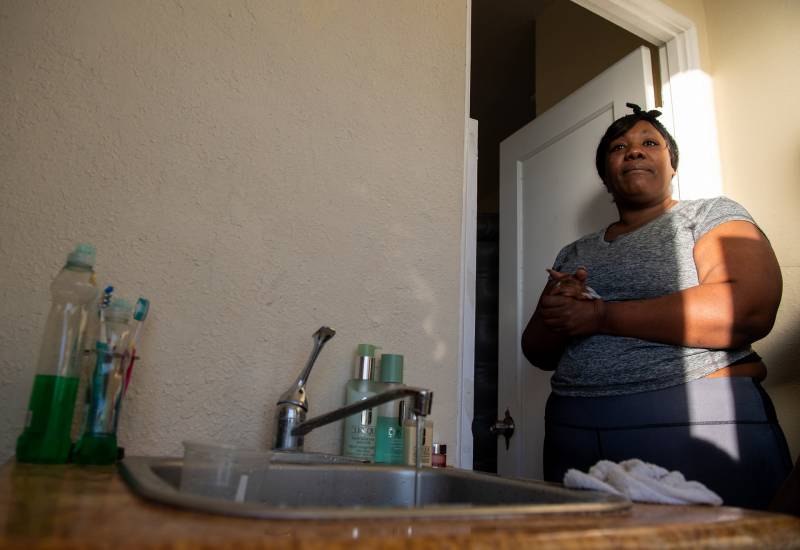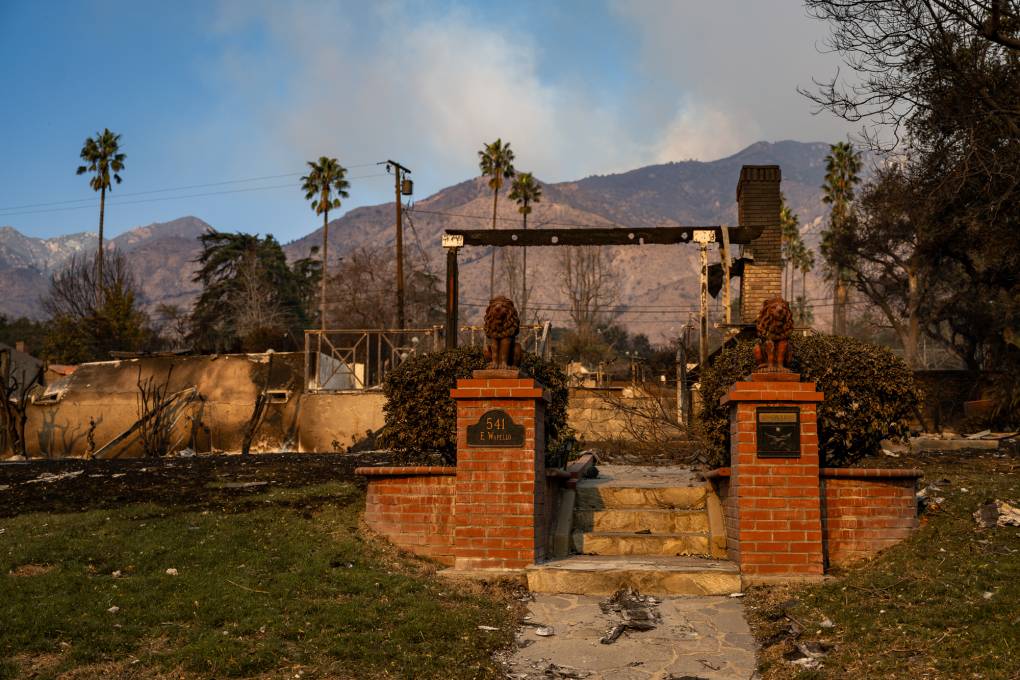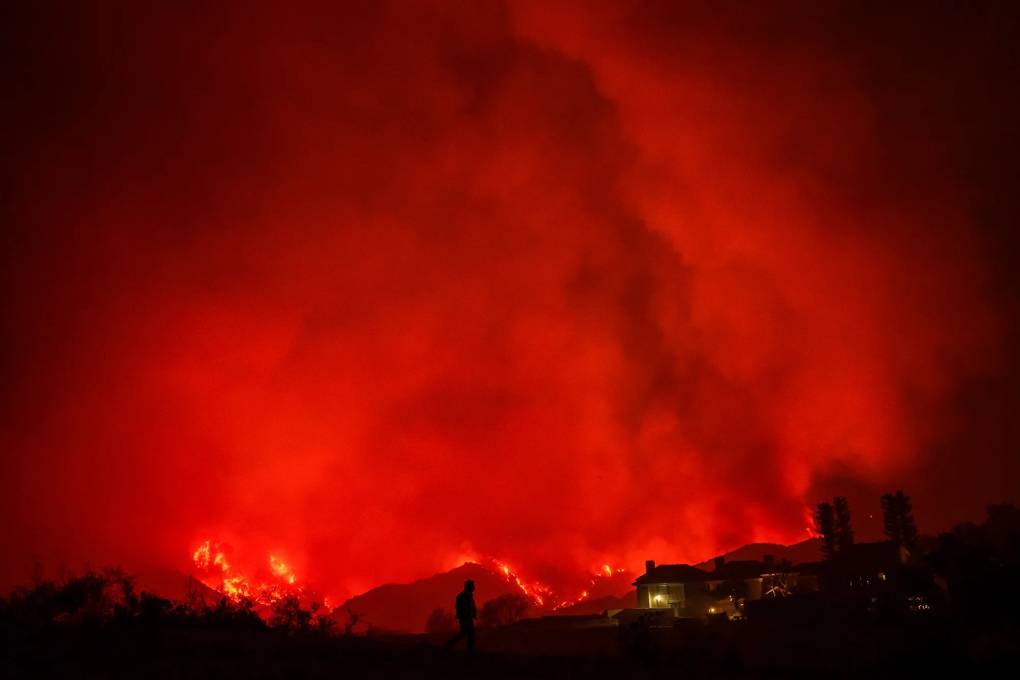Tanya Harris and her three daughters struggle to breathe in the converted motel room in Salinas they now rent as a studio.
Just large enough for a bunk bed and a desk, the room holds all four of them. Harris sleeps on a silver inflatable mattress on the floor.
Doctors say the room is making Harris and her daughters sick.
The state’s housing crisis has resulted in more and more families like Harris’ living in substandard and overcrowded conditions, and local health officials say those conditions threaten residents’ health.
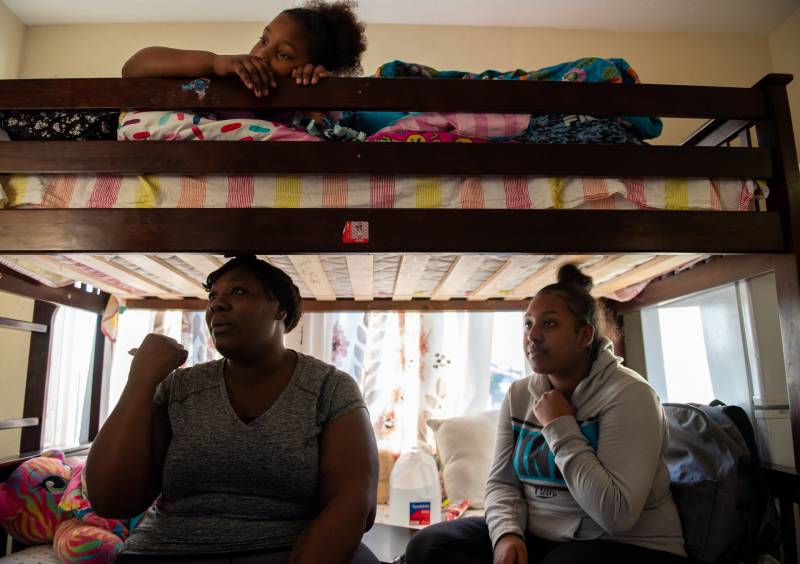
After fleeing her abusive ex, Harris and her daughters ended up living in her van. Later, they moved to a shelter, then into the studio apartment almost exactly one year ago. The Californian isn’t naming her exact location due to concerns about her personal safety.
The motel, which she paid $900 a month to rent, was supposed to be a step up from the shelter.
Sure, they’re all squeezed into one bedroom, but they were glad for the private bathroom and kitchenette down the hall, where they could make meals together.
Instead, things got worse.
Harris said they soon realized the motel was infested with mice, rats and cockroaches, which crawled out of the fist-sized hole behind the refrigerator. Harris even broke her daughter’s trundle bed one night as she jumped on it, startled by “four or five mice” running around.
The water they shower in drips cold from the shower head, and only warms up if the bathroom tap is on at the same time. Mold grows along the shower walls and floors, no matter how many times Harris scrubs it with bleach.
All four of them have asthma, and are having more frequent, fiercer attacks, likely due to the mold and mouse feces they found everywhere, doctors told them. According to multiple studies, exposure to cockroaches and mice increases one’s risk of asthma attacks.
“I feel like a bad mom because I can’t give them everything they deserve,” Harris said, with thick tears rolling past the star tattooed on her cheek.
Seventeen-year-old Heaven, sitting next to her mother on the bottom bunk, touched her arm gently.
“I tell her she’s not,” said Heaven. “She does everything. She works two jobs, and she’s just one person. To me, she’s Superwoman.”
Overcrowding Increases Health Risk
Between 2006 and 2018, the median household income in California grew 6.4%, but the average real income for the lowest 20% of households dropped by 5.3%. During that same time period, the cost of housing increased by more than 8% from 2017.
In this environment, it is not surprising that families would double or triple up.
“If you’ve got people in overcrowded conditions, typically, it’s going to be a result of economic inequality,” said Dr. Maximiliano Cuevas, who heads up Clínica de Salud del Valle de Salinas, a community-founded health clinic that works primarily with farmworkers.
A 2019 analysis of Census Bureau data by the California Budget and Policy Center found statewide economic inequality, resulting in millions being unable to afford basic bills.
“When you start superimposing economic inequality – that is you don’t have sufficient economic resources to maintain yourself while you’re here – it will impact you,” Cuevas said. “We break down. Our body begins to get sick. If you don’t have access to healthcare, you get sicker until that disease process runs its course.”
People living in overcrowded homes may have to deal with vermin and pests, as it can prove more challenging to keep the home clean when too many people live there.
Communicable diseases also love overcrowding. Viruses, fungal infections and head lice thrive in these environments, where germs travel in the air from coughs and linger on commonly touched items.
Diseases that Thrive
The county health department doesn’t track individual cases of norovirus or influenza, other than outbreaks or deaths. However, during the 2018-2019 flu season in California, 588 people died from the flu, according to the state health department.
Doctors like Cuevas said overcrowded housing, which has increased as the housing crisis deepened, also raises vulnerable peoples’ risk of contracting these illnesses.
Viruses such as norovirus or influenza can be passed through contact with contaminated surfaces such as door handles, hands or food, but other diseases such as whooping cough or tuberculosis require people to breathe in the bacteria.
“We’ve had instances (of tuberculosis) in the southern part of the county because of overcrowding: that is more than two people living in a room or more than one family living in a house,” said Cuevas. “We’re seeing a lot of that right now. For people to afford the rent of a house, you’ve got five, even 10 to 12 families living in a house.”
“If you’ve got multiple families living in one home, it’s going to be very difficult to isolate someone with tuberculosis, with norovirus, with influenza,” said Dr. Edward Moreno, the director of the Monterey County Public Health Department. “Especially if you have one bathroom."
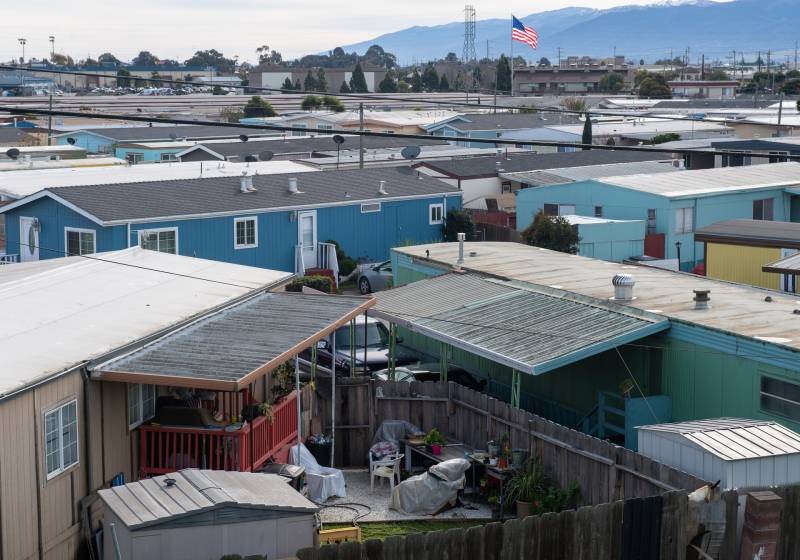
“If you’ve got a one-bedroom home or a studio, you can’t isolate someone. That’s how overcrowding contributes to making people sick, because you can’t isolate the person,” said Moreno.
Based on 2011-2015 data from the Healthy Communities Data and Indicators Project, the state Department of Public Health found that in California, 8.2% of households are considered overcrowded.
In Monterey County, the rate of overcrowded households is 55% higher than the state average: It stands at 12.7%.
Latino households in California experience the highest rate of overcrowding, at 20.1%, followed by Native Hawaiian/Other Pacific Islanders. In contrast, white households are the least likely to be overcrowded, at 1.7%.
Tuberculosis is more commonly found among those who live doubled and tripled up, said Cuevas.
In countries with fewer resources, a bacterial disease like tuberculosis is often considered a death sentence, said Moreno. Mexico, South America, Southeast Asia and Central Europe all grapple with this fear, said Moreno.
“If you want to stay in the family, you want to keep your job, you don’t talk about your tuberculosis, even though you’re probably infecting other people,” said Moreno. “That’s something we deal with as we’re doing our investigations, so we don’t always get all their other family members or people at work they’ve exposed,” he said.
Doctors with the Monterey County Department of Public Health noted that tuberculosis infections increased in the second half of the decade but dropped from 29 cases in 2018 to just 12 cases in 2019, said Kristy Michie, the assistant director of public health.
“That’s in a county with more than 440,000 people,” said Moreno.
Asked what factors led or contributed to the decline in tuberculosis in the county, officials from the public health department are stymied.
“The health department does not have any data or evidence to support theories about why the incidence declined last year,” said Michie. As such, she said, officials are closely monitoring cases.
“Last year was unusual for us, so we do expect to see at least this number or more this year,” said Michie. “If that’s influenced by overcrowding, we can’t say for sure; there’s a lot of things at play there.”
Another bacterial disease, pertussis, also known as whooping cough, can pass more easily among the vulnerable in overcrowded conditions. More individuals became ill with whooping cough in 2019 than in previous years, but Michie said that was expected due to its cyclical pattern that peaks every three to five years.
“It looks like a radio wave across time,” she said.
Local, Low-cost or No-cost Healthcare
In certain parts of Monterey County, overcrowding and unhealthy living conditions are common, thanks to a lack of affordable housing. That can leave the area’s tens of thousands of farmworkers squeezed into garages and living rooms.
According to a 2015 fact sheet by researchers at San Diego State University and the Center for Immigrant Integration at the University of Southern California, an estimated 18%, or just under 9,000, of the 49,000 people who live in East Salinas are undocumented immigrants.
The researchers estimate only about 23% of undocumented immigrants have health insurance, compared with 63% of the U.S.-born population, excluding documented immigrants.
“The group that’s going to face difficulty (getting treatment) are the uninsured,” said Moreno. Specifically, he said, those who didn’t sign up for Covered California, or don’t have Medi-Cal or Medicare.
Going without health coverage can leave people choosing between a bill and a doctor’s visit.
Children under 18 years of age and adults under 25 are guaranteed medical benefits by the Golden State, regardless of citizenship. However, that could still leave millions of residents without health insurance.
In 2014, between 2.35 million and 2.6 million undocumented immigrants called California home, research by the Public Policy Institute of California showed. Those numbers account for nearly a quarter of the nation’s undocumented population and 6% of the state’s total population.


